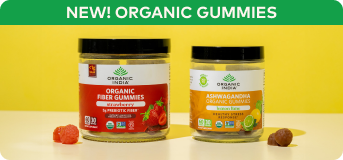

Section

Back
Coconut Oil Pulling: An Ancient Oral Health Practice
10/27/2024 | Written by Kate Tant
Herbal Secrets
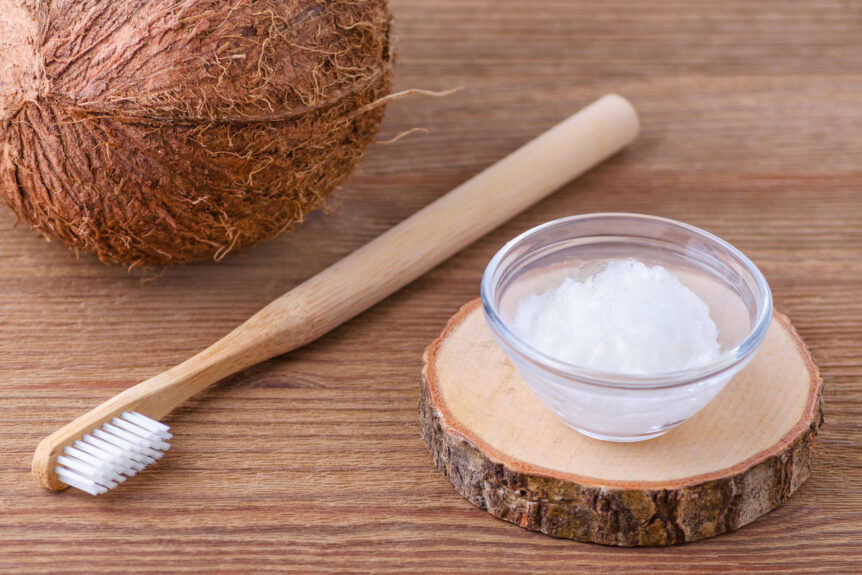
Coconut oil pulling may seem like an unusual modern-day practice, but it is deeply rooted in Ayurveda with a growing body of anecdotal evidence supporting its benefits. Passed down through the generations, oil pulling is a powerful method for maintaining oral health.
The origins of oil pulling can be traced back over 3000 years when it was referred to as “Kavala Graha” or “Gandusha.” Ancient Ayurvedic practitioners believed that the therapy of oil pulling could purify the entire system, as the mouth was considered the gateway to the body.
In modern times, the practice of oil pulling gained renewed interest in the 1990s when Dr. Karach, a Ukrainian physician, introduced it to the Western world. He prescribed this to help his patients with a variety of ailments and to aid in the detoxification process. This sparked renewed interest in the ancient practice, leading to researchers exploring its potential benefits.
If you’re looking for a holistic approach to your oral hygiene, incorporating coconut oil pulling is a wonderful place to start. In this article, we’ll describe how you can use this practice for fresher breath, improved oral health, and perhaps even whiter teeth.
CONTENTS
- What is coconut oil pulling?
- How does it work?
- Benefits of coconut oil pulling
- Does oil pulling work?
- How-to
- Coconut oil pulling with Neem
- Herbal oral health and wellness
What is Coconut Oil Pulling?
Coconut oil pulling is the simple practice of swishing a tablespoon of coconut oil in your mouth for typically 10 to 20 minutes. As the oil melts from the heat of your mouth, you gently swish and move the coconut oil around your mouth and teeth, allowing it to coat all the surfaces of your oral cavity. The swishing action “pulls” bacteria, toxins, and plaque from your mouth, leaving your teeth and gums cleaner and healthier.
How Does it Work?
So how does swishing coconut oil around in your mouth benefit oral hygiene? Coconut oil, derived from the meat of mature coconuts, is rich in medium-chain fatty acids, particularly lauric acid. Lauric acid is known for its antimicrobial properties, making it an excellent choice for oral health.
When used for oil pulling, coconut oil attracts and traps bacteria, toxins, and debris in the mouth, effectively “pulling” them away from the teeth and gums. After about 15 to 20 minutes of oil pulling, the coconut oil will transform from a clear liquid to a milky white substance, indicating that it has absorbed bacteria and toxins from your mouth.
Most individuals who advocate for oil pulling as a health therapy, use coconut oil because it has a relatively pleasant taste and texture, making it more appealing to other oils. It can also be combined with essential oils or other natural herbs like Neem.

Top 5 Benefits of Coconut Oil Pulling
While modern scientific studies on oil pulling are still evolving, holistic and Ayurvedic practitioners don’t hesitate to lean into this centuries-old practice. One of the primary reasons coconut oil pulling has gained popularity is the wide array of potential benefits it offers.
Anecdotal evidence suggests that participating in a regular coconut oil pulling practice can lead to whiter teeth, fresher breath, and improved gum health. Some even suggest it can help reduce the risk of cavities by reducing the overall bacterial load in the mouth.
Some of the most commonly reported benefits of coconut oil pulling include:
1 Improved oral hygiene: Reduces the number of bacteria found in saliva. The lauric acid helps remove harmful bacteria, leading to healthier gums and fresher breath.
2 Gum health: Oil pulling may support a healthy inflammatory response in the oral cavity by helping to soothe irritated gums. A healthy oral microbiome can lead to improved overall health.
3 Detoxification: With over 700 types of bacteria that can live in your mouth, certain types of these bacteria can contribute to health issues throughout the body. Some believe that coconut oil pulling aids in detoxifying the body by reducing the bacterial load in the mouth, which may prevent the spread of toxins into the bloodstream.
4 Whiter teeth: Regular oil pulling can help remove stains from the surface of the teeth, giving them a whiter appearance without the use of chemical whitening agents. This process may take several weeks or months of consistent oil-pulling to see noticeable results.
5 All-natural remedy: Coconut oil is free from harmful chemicals found in some commercial mouthwashes and oral hygiene products, making it a natural, gentle option.
Does Oil Pulling Really Work?
While the potential benefits of coconut oil pulling are intriguing, it’s natural to wonder: does it really work? The answer, as with many alternative health practices, is not always straightforward. The effectiveness of oil-pulling is still a topic of debate in the scientific community.
Even though several small-scale studies have shown promising results regarding the benefits of oil pulling on oral health, larger, long-term studies are needed to fully understand the health benefits of this centuries-old practice. But even though there is a lack of scientific evidence, the anecdotal evidence has been positive for those who have tried it.
That said, it should not replace traditional oral care practices like brushing, flossing, or visiting the dentist. Think of it as an additional holistic therapy that complements your oral hygiene routine.
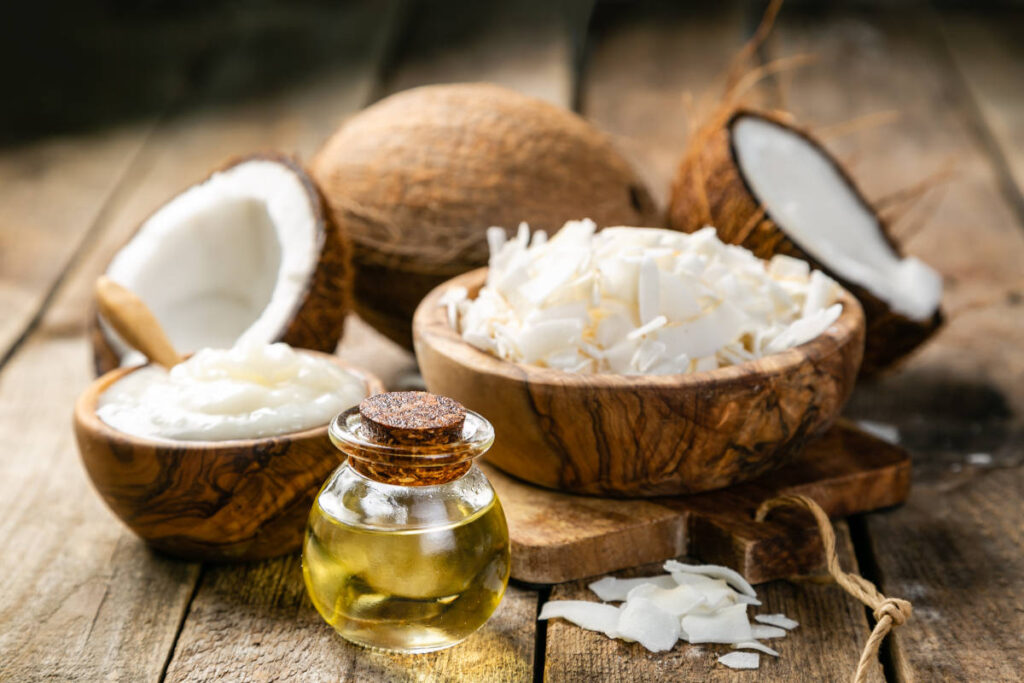
How-To
Coconut oil pulling is a simple process that is easy to implement into your weekly or daily routine. Here’s a step-by-step guide:
- Choose the right kind of coconut oil: Make sure to use organic, cold-pressed, and unrefined coconut oil to avoid any chemical residues.
- Take a spoonful: Place about a tablespoon of coconut oil into your mouth. If you’re just starting, use less until you get used to the texture and feel.
- Gently swish: Gently start moving the coconut oil around in your mouth. It will quickly melt, making it easier to swish. Be gentle—there’s no need to swish vigorously.
- Build up time: Start with 5 minutes and gradually increase your time up to 15 to 20 minutes as you get used to the process.
- Do not swallow: Resist the urge to swallow! The oil collects toxins and bacteria.
- Spit it out properly: After pulling, spit the oil into a trash can. Do not spit into the sink as it will solidify and clog the drain.
- Rinse and brush: Rinse your mouth with warm water, then brush your teeth as usual to remove any remaining oil.
You may choose to oil pull one or two days a week or even every day. The best time is in the morning when you first wake up. But another good time would be before bed.
Coconut Oil Pulling with Neem Powder
For an added boost to your coconut oil-pulling routine, try incorporating Neem powder. Neem is a renowned Ayurvedic herb known for its powerful antimicrobial properties.
Neem has been used for centuries in traditional oral care, particularly for its detoxifying properties that help protect the gums and mouth from bacteria. The addition of Neem powder can potentially amplify the oral health benefits of this ancient practice.
Here’s how you can incorporate Neem powder into your coconut oil-pulling practice:
- Prepare the Neem powder: You can use the powder from a Neem capsule by simply twisting it open and pouring the powder into a small bowl.
- Rub the Neem on your teeth: Dip a clean finger into the Neem powder and gently rub it onto your teeth and gums.
- Add coconut oil: After applying the Neem, take a tablespoon of coconut oil and begin to move it around your mouth.
- Swish for 5 to 20 minutes: For beginners, start with 5 minutes and gradually build up to 15 or 20 minutes. Make sure you do not swallow and do not gargle.
- Spit and brush: As always, spit the mixture into a trash can to avoid clogging your drain. Rinse your mouth with warm water and brush as usual.
Combining Neem and coconut oil enhances the antibacterial effect and provides a natural, holistic approach to oral hygiene. As a bonus, Neem is also known to freshen breath! And if you love using Neem along with your oil pulling practice, you might enjoy our DIY Neem Toothpaste.
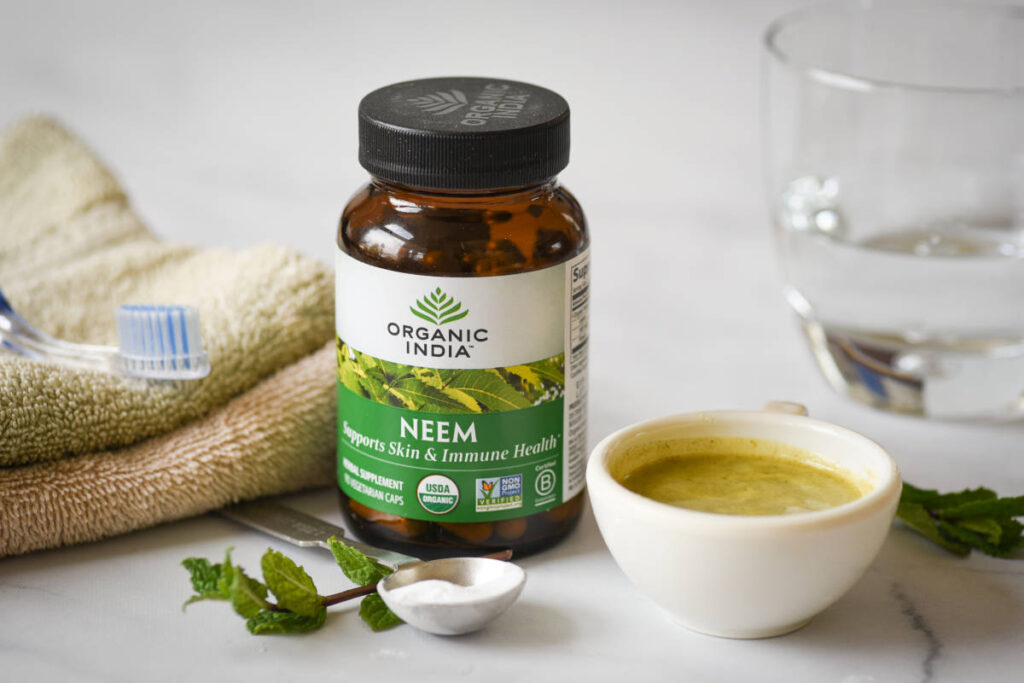
Herbal Oral Health and Wellness
The journey of coconut oil pulling from ancient Ayurvedic practice to a modern wellness trend is a testament to the enduring wisdom of traditional healing therapies. As we continue to explore this time-honored technique, it’s clear that coconut oil pulling offers a natural, accessible, and budget-friendly way to support oral health and overall well-being.
As with any health practice, consistency is key when it comes to reaping the benefits. Regular, mindful practice, combined with traditional oral hygiene methods and routine professional dental care, may contribute to a healthier, brighter smile!
If you’re new to holistic, traditional health practices, coconut oil pulling may seem unusual. But with its deep roots in Ayurveda and a growing body of anecdotal evidence supporting its benefits, it’s worth considering adding it as part of your oral care routine.
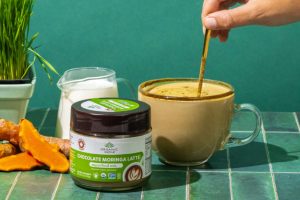





 Kate Tant is a professional health and wellness writer with a strong passion for holistic wellness. Her writing covers topics from Ayurvedic herbs and practices to nontoxic living and intermittent fasting. She is dedicated to helping and encouraging individuals seeking natural solutions to their health
Kate Tant is a professional health and wellness writer with a strong passion for holistic wellness. Her writing covers topics from Ayurvedic herbs and practices to nontoxic living and intermittent fasting. She is dedicated to helping and encouraging individuals seeking natural solutions to their health